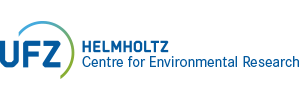Publication Details |
| Category | Text Publication |
| Reference Category | Journals |
| DOI | 10.1016/j.freeradbiomed.2006.06.008 |
| Title (Primary) | Suppression of UVA-mediated release of labile iron by epicatechin - A link to lysosomal protection |
| Author | Basu-Modak, S.; Ali, D.; Gordon, M.; Polte, T.; Yiakouvaki, A.; Pourzand, C.; Rice-Evans, C.; Tyrrell, R.M. |
| Source Titel | Free Radical Biology and Medicine |
| Year | 2006 |
| Department | IMMU |
| Volume | 41 |
| Issue | 8 |
| Page From | 1197 |
| Page To | 1204 |
| Language | englisch |
| Keywords | Catechin; UVA; Iron; Protection; Lysosome; Free radicals |
| Abstract | UVA (320-380 nm) radiation generates an oxidative stress in cells and leads to an immediate release of potentially damaging labile iron pools in human skin cells. Treatment of cultured skin fibroblasts for several hours with physiologically relevant concentrations of either epicatechin (EC), a flavonoid plant constituent present in foods, or methylated epicatechin (3'-O-methyl epicatechin, MeOEC), its major human metabolite, prevents this iron release. The similarity of the effectiveness of EC and MeOEC argues against chelation as the mechanism of iron removal. Evidence based on measurements of lysosomal integrity strongly supports the hypothesis that the catechins protect against lysosomal destruction by UVA. Such damage would normally lead to protease release, which has been previously shown to cause ferritin degradation and release of labile iron. (c) 2006 Elsevier Inc. All rights reserved |
| Persistent UFZ Identifier | https://www.ufz.de/index.php?en=20939&ufzPublicationIdentifier=2479 |
| Basu-Modak, S., Ali, D., Gordon, M., Polte, T., Yiakouvaki, A., Pourzand, C., Rice-Evans, C., Tyrrell, R.M. (2006): Suppression of UVA-mediated release of labile iron by epicatechin - A link to lysosomal protection Free Radic. Biol. Med. 41 (8), 1197 - 1204 10.1016/j.freeradbiomed.2006.06.008 |
|
